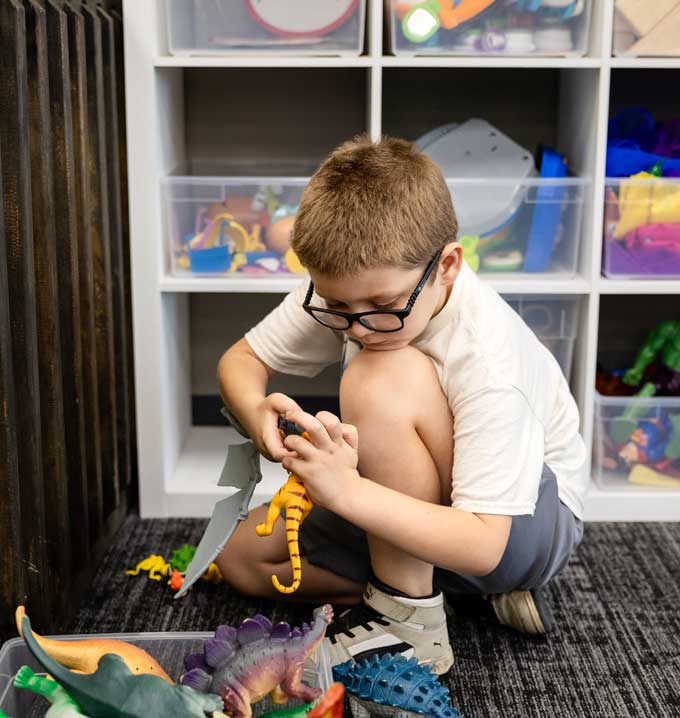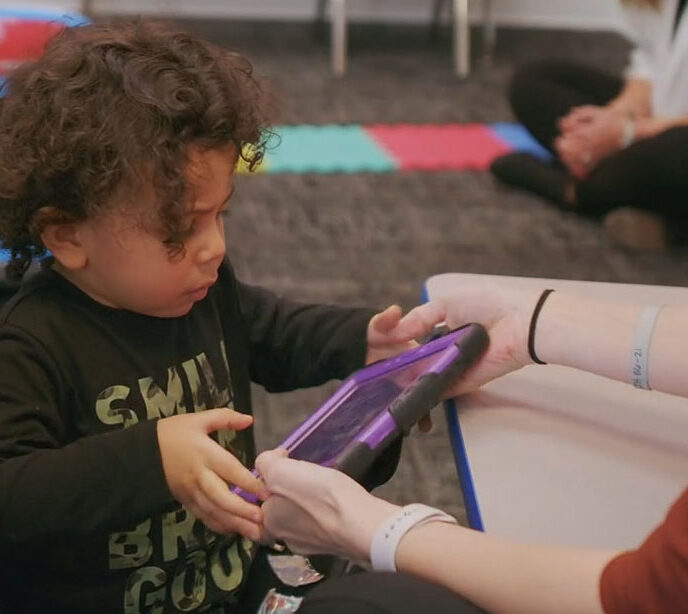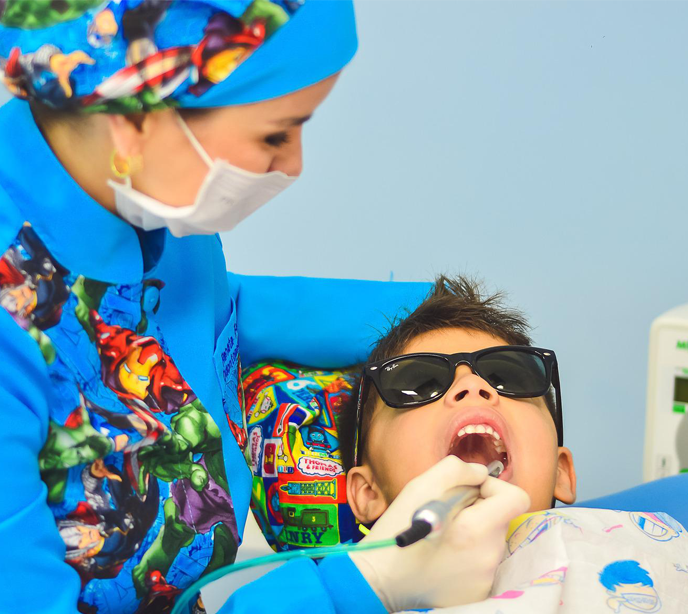Common Acronyms Used With Autism – Lighthouse Autism Center
If your child receives an autism diagnosis, you may encounter many unfamiliar acronyms in medical reports, therapy plans, and educational documents. Understanding these terms and abbreviations can not only help you; it can help you support and advocate for your autistic child. Here’s a guide to the most common acronyms you’ll encounter in autism care and support services.

Acronyms Used With Autism Spectrum Disorder
Autism Acronyms and Abbreviations: What You Need To Know
Do you have a child who has recently been diagnosed with autism? You might feel confused or even slightly overwhelmed by the acronyms used by healthcare providers, educators, and other autism support professionals. We understand — autism terminology can be complex at first, and there is a lot to learn. From diagnostic terms to ABA therapy acronyms and terms for educational accommodations, understanding the most common acronyms and abbreviations for autism-related services, therapies, and support systems will help you navigate your child’s care more confidently.
There are many autism terms to learn, but don’t worry — we’ll start with the basics.
Autism Spectrum Disorder (ASD)
Autism Spectrum Disorder is defined as a neurodevelopmental condition that influences how people perceive, experience, and interact with the world around them. Every autistic person has their own unique way of processing information, communicating, and engaging with others.
In the past, professionals used various categories to describe different presentations of autism.
- Autistic disorder
- Pervasive developmental disorder — not otherwise specified (PDD-NOS)
- Childhood disintegrative disorder
- Asperger syndrome
In recent years, our understanding of autism has evolved significantly. Today, rather than trying to fit autistic people into rigid categories, we now recognize that autism exists on a dynamic spectrum. So, ASD is an umbrella term that better reflects the diverse ways autism can present. This modern understanding acknowledges that autistic individuals may:
- Have varying communication styles and preferences
- Process sensory information differently
- Show intense passion and deep knowledge in specific areas
- Experience social interactions in unique ways
- Benefit from different types and levels of support
This shift away from rigid categories toward a spectrum model helps families and professionals develop more personalized, effective support strategies that celebrate each person’s individual strengths while addressing their specific needs.
Autistic people may experience differences in:
- Motor coordination and physical movement
- Daily living skills and routines
- Speech and language development
- Social communication and interaction
- Sensory processing and regulation
Note: While Rett syndrome was once classified as part of the autism spectrum, it is now recognized as a distinct genetic neurological condition caused by mutations in the MECP2 gene.
Applied Behavior Analysis (ABA)
Applied Behavior Analysis (ABA) is a structured teaching approach that helps autistic people develop important life skills through carefully designed learning experiences. Skills are broken down into manageable steps, with progress measured and celebrated through positive reinforcement. ABA programs will include measurable goals, which are regularly reviewed and adjusted based on the individual’s progress.
Since its introduction in the 1960s, ABA has evolved into a comprehensive therapy that emphasizes:
- Person-centered planning that respects individual preferences
- Development of meaningful life skills
- Support for communication and social interaction
- Focus on functional skills that enhance independence
- Partnership with families and caregivers
ABA is an evidence-based practice supported by extensive research and clinical studies. The therapy techniques are versatile and can be applied in various settings, such as homes, schools, and community centers. Modern ABA practices also adhere to strict ethical standards, as set by organizations such as the Behavior Analyst Certification Board (BACB).
While ABA has received support from various medical and governmental organizations, including the U.S. Surgeon General, therapy choices are ultimately personal decisions. So, it’s important for families to work with their healthcare providers and ABA therapists to identify the most appropriate combination of support methods for their autistic child’s unique needs.
Board Certified Behavior Analyst (BCBA)
A graduate-level professional certified in behavior analysis, by the Behavior Analyst Certification Board. BCBAs design and oversee behavior-analytic interventions, evaluate individuals, and create personalized treatment plans to ensure high-quality care. These professionals also provide supervision for RBTs, BCaBAs, and other professionals working in the field.
Board Certified Assistant Behavior Analyst (BCaBA)
A BCaBA holds an undergraduate-level certification in behavior analysis, also from the Behavior Analyst Certification Board. BCaBAs are not independent practitioners and must work under the guidance of a certified BCBA. To start, BCaBAs may assist with tasks like data collection, observing sessions, and preparing progress reports. As they gain experience, BCaBAs will take on more active responsibilities, spending more time engaging with patients and applying research methodologies to prepare for their BCBA certification.
Registered Behavior Technician (RBT)
A paraprofessional in behavior analysis who practices under the close, ongoing supervision of a BCBA. This role is also often referred to as a behavior therapist. RBTs work one-on-one with autistic children to help them develop new skills and decrease socially significant problem behavior. RBTs receive in-depth training in behavior analysis, required by the Behavior Analyst Certification Board.
Speech-Language Pathologist (SLP)
SLPs are experts in communication. SLPs work with people of all ages, from babies to adults. SLPs treat many types of communication and swallowing problems. These include problems with:
- Speech sounds
- Language
- Literacy
- Social communication
- Voice
- Fluency
- Cognitive communication
- Feeding and swallowing
Dually Certified Clinician (BCBA/SLP)
Dually Certified Clinicians are those who hold 2 certifications in different areas of expertise. In this case, we are talking about a Board-Certified Behavior Analyst and Speech Language Pathologist (BCBA/SLP). BCBA/SLPs are highly skilled and rare; with only a couple of hundred worldwide, they have a master’s degree in both ABA and speech-language pathology and are certified BCBAs and SLPs.
Occupational Therapy (OT)
Occupational therapy is a field of healthcare that treats people who have injuries, disabilities, or other conditions, including autism. The main goal of occupational therapy for autism is to improve the patient’s quality of life. Through interventions, occupational therapists can help people with ASD gain independence.
After the evaluation, the occupational therapist works with the patient and family to develop an intervention plan and treatment goals. Occupational therapy interventions for autism may include:
- Focusing on sensory integration and sensory-based strategies.
- Emphasizing mental health and wellness.
- Implementing emotional development and self-regulation strategies and programs.
- Organizing peer groups, social participation, and play activities.
- Improving self-care routines to help with daily activities such as bathing, feeding, and grooming.
- Working on motor development.
- Supporting adolescents’ transition into adulthood and helping them build workforce skills.
- Using cognitive behavioral approaches to support positive behaviors.
- Crisis Prevention Institute (CPI) Training.
- Picture Exchange Communication System (PECS).
- Childhood Autism Rating Scale (CARS) testing.
- Autism Diagnostic Observation Schedule (ADOS) testing.
Crisis Prevention Institute (CPI) Training
CPI is best described as nonviolent crisis intervention training designed to teach best practices for managing difficult situations and disruptive behaviors. Therapists learn how to identify at-risk individuals and use nonverbal and verbal techniques to defuse hostile behavior. This type of training ensures the utmost safety of the children and staff at our centers
To learn more, visit https://www.crisisprevention.com.
Picture Exchange Communication System (PECS)
PECS is a unique alternative/augmentative communication system developed in the U.S.A. in 1985 by Andy Bondy, PhD, and Lori Frost, MS, CCC-SLP. PECS was first implemented with preschool students diagnosed with autism at the Delaware Autism Program. Since then, PECS has successfully been implemented worldwide, with thousands of learners of all ages facing various cognitive, physical, and communication challenges. The primary goal of PECS is to teach functional communication by exchanging pictures which indicate what a person wants.
Augmentative and Alternative Communication (AAC)
AAC refers to various communication methods that support or replace spoken language. For many autistic individuals, tools like AAC for autism can help them express their thoughts, needs, and feelings more clearly. These methods can be as simple as picture cards (like PECS) or as advanced as speech-generating devices, or apps on tablets. These tools are especially valuable when combined with speech therapy and other supports, like ABA therapy.
Autism Diagnostic Observation Schedule (ADOS)
This is an activity-based assessment administered by trained clinicians to evaluate communication skills, social interaction, and imaginative use of materials in individuals suspected of having autism spectrum disorder.
Childhood Autism Rating Scale (CARS)
This 15-item observation-based rating scale is designed to accurately identify autism characteristics and differentiate them from other developmental conditions. This tool can be useful during early evaluations because many developmental conditions share overlapping traits. For example, when you compare ADHD vs. autism, children might show similar traits and behaviors, such as difficulty focusing or challenges in social situations. However, the Childhood Autism Rating Scale helps clinicians observe and evaluate specific patterns of behavior, communication, and social interaction unique to autism. In CARS, the following characteristics are evaluated:
- The child’s ability to develop and maintain relationships with others.
- Their capacity to imitate and mirror others’ actions.
- How they express and process emotions.
- Their body movement and coordination.
- How they interact with and use objects.
- Their adaptability to changes in routine.
- Response to visual and auditory stimuli.
- Reactions to sensory experiences (taste, smell, touch).
- Expression of fear or nervousness.
- Verbal and non-verbal communication abilities.
- Activity levels and energy patterns.
- The level and consistency of their intellectual responses.
- General clinical impressions.
Modified Checklist for Autism in Toddlers (M-CHAT)
This is a validated screening tool that parents can use to assess their children’s risk for Autism Spectrum Disorder, typically when they are between 16 and 30 months old. It consists of 20 yes/no questions about a child’s behavior, which parents can complete in about 10 minutes. The M-CHAT will provide an autism risk assessment that can help parents identify if their children may need further evaluation for ASD.
Together, we can unlock your child’s potential
Related News

10/07/2025
PECS and Its Use in ABA Therapy – Lighthouse Autism Center
The picture exchange communication system, or PECS, is a teaching system that can help an autistic child or another individual with speech difficulties improve their communication skills. We take a look at PECS’ role in ABA therapy and unpack how it works. What Is the PECS System and How Is It Used In ABA Therapy? […]

08/13/2025
ABA Therapy Tips for Taking Your Autistic Child to the Dentist
Taking Your Autistic Child to the Dentist For any child, and even adults, a trip to the dentist can often be filled with anxiety, fear, and discomfort. For a autistic child, especially, these feelings can be even further heightened by sensitivities to noise, smell, and touch. To make this experience better for both the child […]

08/13/2025
Tips for House Hunting with Your Child on the Spectrum
Guidance for Families with Children with Autism when Moving Moving is always a stressful and complicated endeavor. But when you have a child on the autism spectrum, the thought of packing up your household and moving somewhere new can seem like a near-impossible task. Parents often worry that their children will get overwhelmed by this […]


